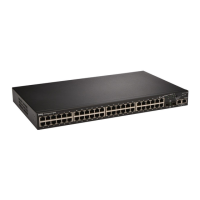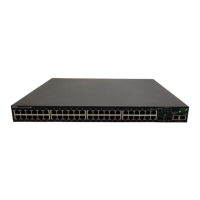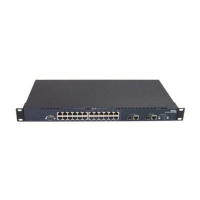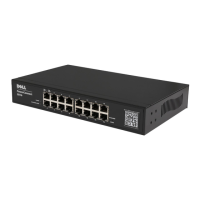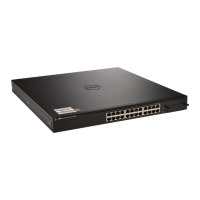136 Clock
Syntax
•
sntp server
{
ip4-address
|
ip6-address
|
hostname
}
[
poll
] [
key
keyid
]
•
no sntp server
{
ip4-address
|
ip6-address
|
hostname
}
•
ip4-address
— IPv4 server address.
•
ipv6-address —
IPv6 server address. When the IPv6 address is a Link Local address (IPv6Z
address), the outgoing interface name must be specified. Refer to the usage guidelines for the
interface name syntax.
•
hostname —
Hostname of the server. (Range: 1 - 158 characters)
•
poll
—
Enable polling.
•
keyid —
Authentication key to use when sending packets to this peer.
(Range:1 - 4294967295)
Default Configuration
No servers are defined.
Command Mode
Global Configuration mode.
User Guidelines
• Up to 8 SNTP servers can be defined.
• Use the
sntp unicast client enable
Global Configuration mode command to enable predefined
Unicast clients globally.
• To enable polling you should also use the
sntp unicast client poll
Global Configuration mode
command for global enabling.
• Polling time is determined by the
sntp client poll timer
Global Configuration mode command.
• Polling time is determined by the
sntp client poll timer
Global Configuration mode command.
• The IPv6Z address format: <
ipv6-link-local-address
>%<
interface-name
>
–
interface-name
—
vlan
<
integer
> |
ch
<
integer
> |
isatap
<
integer
> | <
physical-port-name
> | 0
–
integer
— <
decimal-number
> | <
integer
><
decimal-number
>
–
decimal-number
— 0 | 1 | 2 | 3 | 4 | 5 | 6 | 7 | 8 | 9
–
physical-port-name
— Designated port number, for example 1/e16.
• If the egress interface is not specified, the default interface is selected. Specifying interface zone=0 is
the same as not defining an egress interface.
book.book Page 136 Thursday, December 18, 2008 7:40 PM

